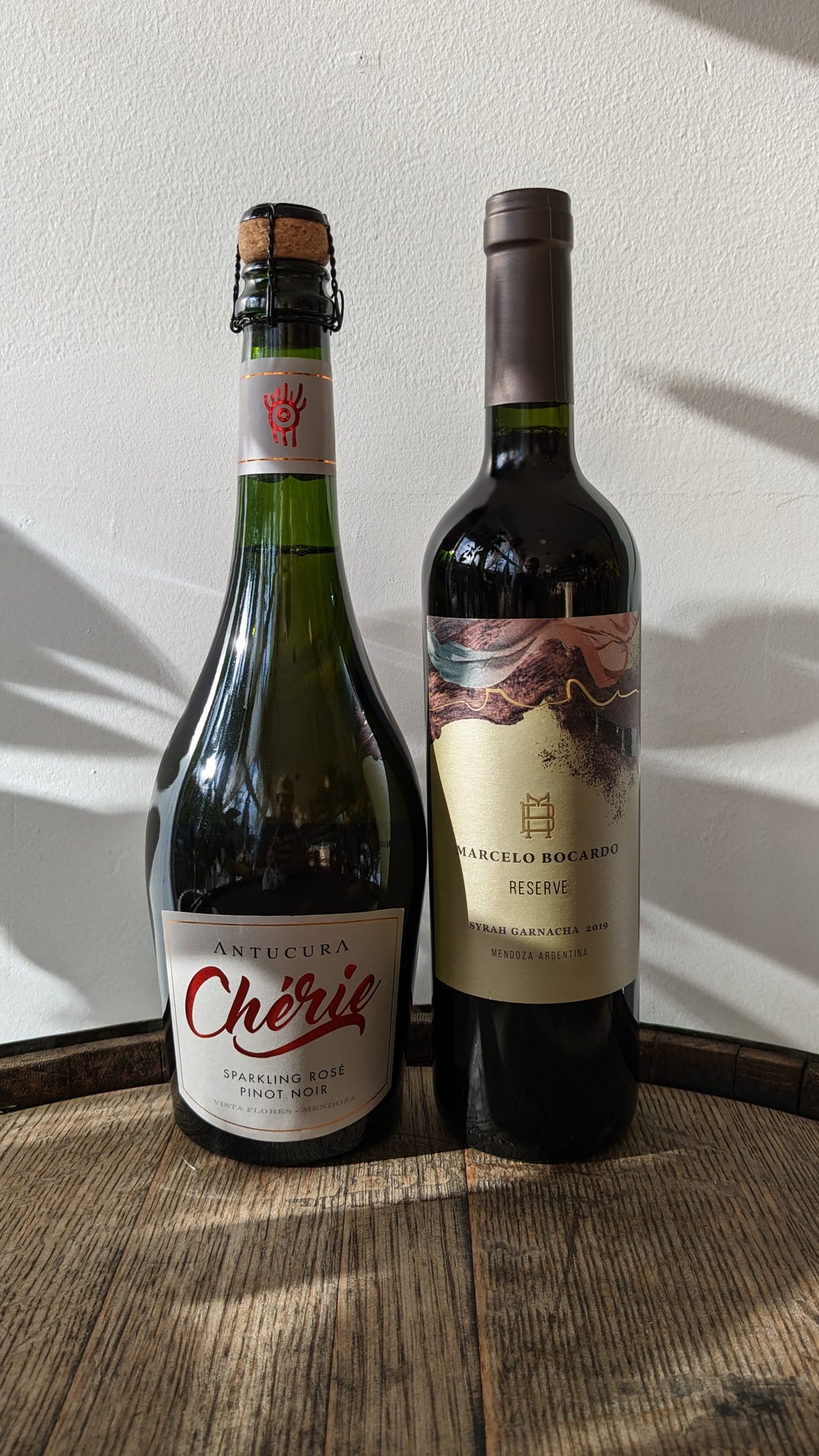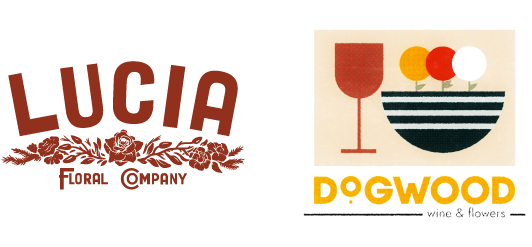
April 2023 - Mendoza, Argentina
April 2023
Mendoza, Argentina
Featuring:
Antucura
Marcelo Bocardo
For our first foray into the southern hemisphere enology (or non- West Coast / Europe, as is our focus), there is no better starting point than Argentina. With a wine history dating back to the 1500’s and hefty production placing it in the top-10 of wine producing countries, Argentina is inarguably a heavyweight in the wine world. Why is it rarely treated as such, then? The problem may be that many people just think ‘malbec’ (and maybe ‘cheap malbec’ at that) when they hear Argentine wine mentioned. We’re going to show you there’s so much more.
History
Argentina’s wine culture dates back to the mid 16th century, when it was a province of the Spanish crown. The first plantings were believed to be brought over the Andes from Chile and were planted in modern day San Juan and Mendoza. Ampelographers (grapevine botanists), believe that the grape criolla chica was the primary cultivated grape for nearly 300 years. This grape, genetically identical to Chile’s pais and California’s mission, was originally called listán prieto in Spain. It was quite popular with the Church crowd (read: Spanish missionaries) that brought this grape to the far reaches of the western hemisphere. It is light-pink skinned, light in body, needs to be harvested early to retain acidity, and has fragile tannins making it perfect for carbonic maceration. While absolutely unrelated to gamay, it undoubtedly shares some of the same characteristics. It is also incredibly hardy and pest/disease resistant, needs very little attention or irrigation, and can survive for centuries. Some suspect that vines from original plantings from the 16th-18th century may still exist in long-forgotten plots.
In the mid 1800’s, San Juan’s provincial governor (of the newly independent Argentina) asked a French agronomist to bring over some cuttings of vines he believed would flourish in Argentina’s climate. One of these grapes was malbec, which was an immediate success due to its ability to thrive in the climatic conditions of Argentina’s Mendoza region (more on climate below). This influx of new grapes allowed the fledgling wine industry to boom. Soon railways were being built to transport wine from the mountains to the population centers along the coast. When phylloxera hit Europe, migrants (aka winemaker refugees) came to Argentina. With them they brought more grapes, knowledge and techniques, and a drive to create a new life. Argentina was economically booming and the wine industry was right behind it, creating massive volumes of wine for consumption of its increasingly affluent population.
Just before the great depression, Argentina was one of the richest nations in the world. However, once the global depression had run its course, the country spiraled into a number of serious socio-economic issues including coups, dictatorships, hyperinflation, and most debilitating of all, World Cup losses. For most of the mid-20th century, the Argentine wine industry stopped progressing forward and put most of their energy towards producing cheap ‘vino de mesa’ rather than fine wine. As an industry, the export market had always been practically non-existent due to both geographic location and, more likely, copious local consumption. In fact, Argentines consumed an average of 90 L / person / year in the 1970s. That’s one bottle every 3 days. For comparison, Americans and Brits averaged one bottle every 4 months (3 L / year) around that time. This may be why wine was named ‘bebida nacional’.
In the 80’s and 90’s, Argentina started to follow neighboring Chile’s lead and aggressively focused on the export market. High-profile American and French winemakers (many of whom made wine in the ‘Parkerized style’) were called upon, bringing viticulture techniques to increase quality and concentration, as well as a penchant for new oak and high alcohol.
Today, the ‘style’ of Argentine wine has little in common with its long history. The gnarled bush vines of criolla chica seem to be all but extinct. Gone are the jugs of rustic ‘vino de mesa’. Even the common man’s wine is grown using the highest technology, sourced from a newly planted monoculture of grapevines, and laden with oak, ripeness, and “flavor”.
Climate and Geography
The primary geological and climatic factor in Argentine (and Chilean, Bolivian, or Peruvian) wine is the awe-inspiring Andes Mountains. This mountain range - the longest in the world - runs the entire length of Argentina’s western border. Any wine regions of significance lie in the foothills of the Andes, on the eastern side of the mountains. Due to the inland nature of these regions, they are essentially high-elevation deserts with low rainfall, high sunlight, warm summer days, and cold nights. In Mendoza, temperatures can range from 50 F - 100 F in a 24 hour period over summer, creating high diurnal swings great for preserving acidity and putting the vines to rest at night. With less moisture in the air, there is also less disease pressure (like mildew). Phylloxera, the primary pest for grape vines, is nearly a non-issue in the country. This climate allows a high rate of organic viticulture and relatively stable, secure vintages (without frost, hail, smoke, etc).
One major challenge of viticulture in Argentina is the lack of water. In some regions they only see 10 inches of rain a year. For comparison, Portland sees about 35-40”, and ‘dry’ regions like Walla Walla and Napa Valley see 19-25” / year. To combat this lack of rain, viticulturists use trench irrigation, which salvages snowmelt from the Andes and releases it in well-defined trenches throughout the vineyards to saturate the ground. While this may seem like a novel advancement by winemakers, it is actually an ancient method developed by the Huarpes - a local, indigenous tribe of Mapuche who inhabited the Andes long before Spanish settlers arrived.
Antucura, ‘Chérie’ Sparkling Rosé of Pinot Noir,
Vista Flores, Mendoza NV
Anne-Caroline Biancheri moved to Buenos Aires from France in the early 90’s. With a background in the literary world, she founded a small publishing company called Caviar Bleu. Several years later, Anne-Caroline moved the headquarters to Mendoza, where she started to focus publishing on guidebooks, wine writing, and historical features on Mendoza. Naturally, she also was moved to bring her passion for learning and knowledge of business to start a winery. And thus, Antucura was born.
Antucura means ‘Sun Stone’ in the language of Mapudungun, the language of the Mapuche people mentioned above. This sun stone figurine is depicted on the neck of the bottle.
This wine is a rare bottling of Pinot Noir from Mendoza. Usually, Pinot can only be found in Argentina’s Patagonia region, where it is considerably colder than Mendoza. However, due to a cool, high elevation (3500’) pocket of the Uco Valley called ‘Vista Flores’ Pinot Noir is able to be cultivated here.
The result is a bright, expressive sparkling rosé - notes of dried fruit, lemon, melon, and red delicious apple are rounded out by a palate with candied strawberries and cream. At just 9 g/l, it is in the mid range of the ‘Brut’ classification (aka not sweet). Pair with anything, preferably your chérie.
Marcelo Bocardo, ‘Reserve’ Syrah/Garnacha, Mendoza 2019
Marcelo was just twelve when his father and grandfather - both Argentine winemakers themselves - assigned him two rows of vines to tend and manage himself. With no technical experience (as most 12 year olds lack), Marcelo was left to his senses of sight and taste to make decisions about the grapes. This experience was the start of a career that took him to Chile managing wineries on both the winemaking and sales side of the business. He moved back to Argentina in 2001 and founded Proemio Wines, a winery focusing on multiple grapes, vineyards, and sub-regions in Mendoza to create a well-balanced portfolio of wines.
In 2019, when Marcelo and Patricia’s son, Nicolas, started working at the winery, Marcelo created a namesake sub label to designate his highest quality, reserve wines. These ‘Marcelo Bocardo’ wines are focused on the best barrels of the best vineyard blocks in the Proemio estate. While they still follow Marcelo’s signature style - elegance, savory notes, varietal specificity, and less over-extraction and oak - these wines are a bit more sumptuous and expressive than the usual Proemio range.
This bottling is composed of equal parts organically grown Grenache and Syrah from the Maipú Valley, a small but highly-regarded sub-region of Mendoza. Aged for 10 months in French oak, this wine is a lovely combination of blue/red fruits, chocolate, and savory earth notes. It has vibrant acidity, making it a great food wine to serve alongside grilled meats (in the Argentine tradition) or weird false Spring/early April savory stews. Enjoy now or age for a couple years longer, both work!
